Turn Up the Heat: New Alloy May be Key for High-Temp Additive Manufacturing Aerospace Applications
In the highly competitive aerospace sector, where conventional manufacturing processes are costly and supply chains are constantly under pressure from ever more stringent environmental restrictions, greater agility is critical. Metal AM processes, with the ability to manufacture innovative geometrically complex parts in a timely, local, and cost-effective way, have a huge part to play. And thanks to a recent collaboration between Honeywell and Alloyed, that part is expanding.
Additive Manufacturing's (AM) disruptive potential for the aerospace sector is widely acknowledged, holding out the opportunity to break the typical compromise between scale and scope in manufacturing first by reducing the capital expenditure required to achieve economies of scale, and second by increasing the variety of designs that a given amount of capital expenditure can produce.
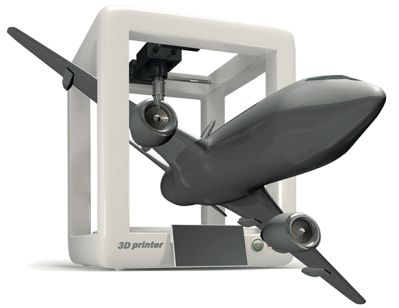
The aerospace sector has long been recognized as an early adopter when it comes to cutting-edge technology such as additive manufacturing.
One AM platform can at the same time build a number of complicated parts with variable designs, and this means that large centralized factories with assembly lines are not always required, and with AM complexity, production change overs and customization are cheaper.
As AM technologies continue to develop and secure a stronger foothold in production scenarios, there is simultaneous development ongoing across the sector to refine associated parts of the AM ecosystem, with a great deal of emphasis being placed on in-process monitoring for traceability and validation purposes, as well as automated post-processing technologies.
A further, vital area of development is materials, particularly metal powders for AM that meet -- and exceed -- the functionality and performance of existing production materials as well as meeting the requirements of specific applications.
Alloys for High-Temperature Applications
It is fair to say that, to date, metal AM processes have not performed well with the highest temperature materials -- that is to say, materials for components that operate at the top of the temperature range within jet turbines. In the aerospace sector, such applications would include, but are not limited to, the critical areas of a turbine engine such as the back end of the compressor, the combustor, the high- and low-pressure turbine areas, and the exhaust. All parts in these areas of the engine are exposed to high temperatures and higher levels of oxidation.
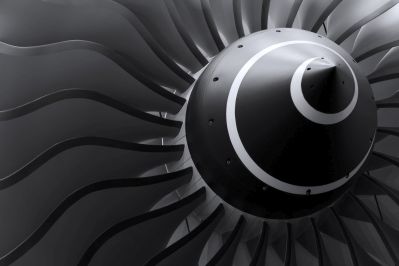
AM processes have not typically performed well in high temperature areas like a turbine engine.
For such high temperature applications, the aerospace sector typically uses nickel (Ni) alloys such as IN738, IN713 and MarM247. However, these alloys are incompatible with welding techniques due to their chemistry, as they do not respond well to rapid thermal gradient changes and it is virtually impossible to control the amount of cracking during the weld process. Therefore, these alloys have historically been processed using casting methods where the cooling rates are relatively low.
This is the conundrum facing users of metal AM within the aerospace sector looking to capitalize on the advantages that the process has to offer for high temperature applications.
This has driven further exploration of alternative materials that could replace traditional high temperature alloys without compromising structural integrity while at the same time being compatible with AM. The advantages of AM-compatible alloys for high temperature applications derive from the fact that the components assembled in hot sections of engines are usually some of the most expensive. And due to the harsh environment in which they work, they have short life-cycles.
Using Honeywell's Laser Powder Bed Fusion (L-PBF) process with high temperature alloys offers manufacturers the opportunity to benefit from better inventory management, reducing late penalties due to tooling delays, and creating more intricate shapes, often allowing the integration of several components in a sub-assembly into one.
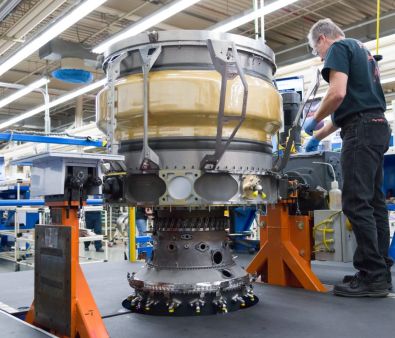
Honeywell first engaged with metal AM processes in 2007.
It was to address this requirement that Alloyed worked with leading aerospace OEM Honeywell to test a new high temperature nickel alloy -- ABD®900AM -- with the L-PBF process, to determine if it could serve as a replacement for existing high temperature casting alloys. The purpose of this effort was to discover at a high level if ABD®900AM showed promise and warranted further development.
Honeywell and Alloyed Collaboration
Honeywell first engaged with metal AM processes in 2007 when the company had several prototype parts manufactured by external vendors. Over the ensuing years, the company has continued to assess and implement the technology for applications where there is a need for a rapidly manufactured metal parts, including for test bed components.
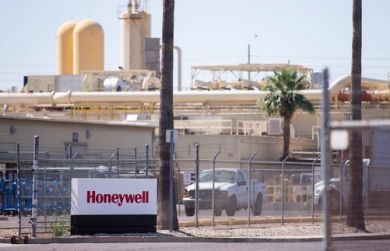
Honeywell opened a $5 million AM facility in Phoenix, AZ six years ago.
In 2014, led by the efforts of Engineering Fellow Donald Godfrey, the company opened its first $5 million AM facility in Phoenix, AZ, USA, with a focus on L-PBF and electron beam PBF technologies. In the same year AM facilities were also opened in Bangalore and the Czech Republic.
Today, the Honeywell AM operations have grown significantly in both size and capacity and incorporate tensile, LCF, and creep testing equipment, powder characterization equipment, and a vacuum furnace for stress relief and heat treatment. In Arizona, more L-PBF machines were added in 2020, and now the lab is fully equipped to manage end-to-end powder and mechanical characterization, pre-production builds, and a full range of R&D activities.
Honeywell is using the pilot-production facility as a means to either develop parts for production that will be sent to a supplier for manufacturing or working with a supplier to cooperate in the development of components for production.
As an organization, Honeywell collaborates with universities and companies around the world with the intent of developing new technology and exploring new technologies as they emerge. After an initial introduction to Alloyed by a third party, Honeywell recognized the potential of the Alloys By Design (ABD) system brand developed by highly respected metallurgists from Oxford University and this stimulated further interest in the ABD®-900AM material and its potential for high temperature aerospace applications as it was not prone to cracking.
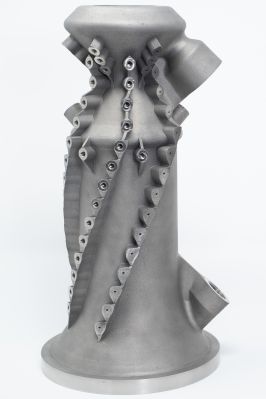
3D printed rocket combustion chamber
The result of this initial collaboration was a dedicated project that would see Honeywell build a limited number of test specimens in its additive manufacturing laboratory located in Bangalore, India. Honeywell would build and test the material to determine if the results merited continued investment and development.
ABD®900AM
ABD®-900AM is an age-hardenable, nickel-based superalloy designed specifically for use as feedstock in the L-PBF process. It is optimized for environmental resistance and high-temperature tensile strength, with a working temperature range up to 900°C (1652°F) in its age-hardened state. ABD®900AM not only offers a higher operating temperature but also significant long-term stability.
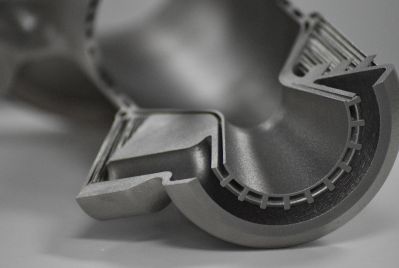
Cooling channels 3D printed using the new high temperature nickel alloy ABD®900AM.
Exhibiting excellent creep strength, ABD®-900AM has also demonstrated superior resistance to cracking during manufacture and heat treatment, enabling complex part design. It is designed to be free of solidification, liquidation and strain-age cracks, and showcases exceptional printability for a 40% γ'-phase strengthened alloy. The ABD®-900AM alloy also shows high as-printed part density of >99.9%.
Test Results
The scope of the collaborative project between Alloyed and Honeywell was the assessment/qualification of the ABD®-900AM Ni-alloy powder for the next generation of additively manufactured high temperature applications. Honeywell has undertaken a series of tests to confirm and optimize the properties of the alloy with some extremely positive results.
The results of the work between Alloyed and Honeywell show that ABD®-900AM is an alloy that demonstrates great potential for high temperature applications. The material welds and fuses extremely well, particularly when compared with other high temperature nickel alloys. While ABD®900AM is not a replacement for CM Mar-247 in most cases due to the oxidation capabilities, it does exhibit very good mechanical properties at high temperatures when compared with Mar 247 or IN792 or IN713 or IN738.
Want more information? Click below.
Rate this article
View our terms of use and privacy policy ::m::